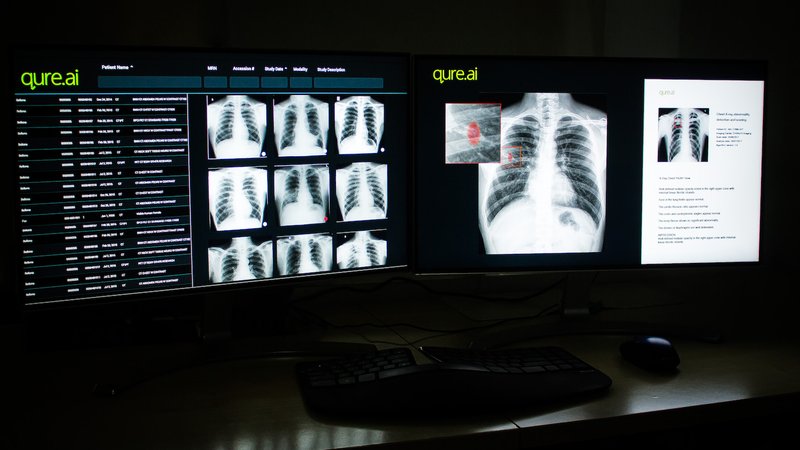
A Philippines study evaluated qXR (Qure.ai), an AI tool for tuberculosis (TB) screening using chest X-rays, on 292,675 participants in combination with the Xpert MTB/RIF sputum assay to detect TB in screening setting. Aimed at enhancing TB detection efficiency in high-burden areas, qXR processed CXR images rapidly, facilitating immediate follow-up actions for presumptive TB cases. The AI tool screened 101,170 participants, achieving a higher diagnostic yield (3.8%) than human readers who screened 191,505 participants (2.4%). The number needed to screen (NNS) to detect one TB case was significantly lower with AI (26.3) compared to human readers (41.5). Additionally, the AI approach reduced the drop-out rate to 16.6%, versus 43.1% with human readers, underscoring qXR's potential to streamline TB screening and diagnosis effectively.
Read full study
Benefits of Artificial Intelligence versus HumanReader in Chest X-ray Screening for Tuberculosis in the Philippines
International Journal of Health Sciences and Research, 2024
Abstract
Background: Since 2017, the Philippines Business for Social Progress (PBSP) has implemented active case finding for Tuberculosis under their Advancing Client-centered Care and Expanding Sustainable Services for TB (ACCESSTB) project. This study aims to conduct a comparative analysis of a screening approach using AI for Chest X-ray (CXR) interpretation versus an approach relying solely on human-readers in three major regions of the Philippines.
Methods: This study undertook a retrospective analysis of data derived from two well-established and ongoing screening approaches. The data on number of people screened and the outcome of the screening at each stage of the screening process was extracted from quarterly reports provided by PBSP. Subsequently, the data was analysed to determine the diagnostic yield, the number needed to screen and the drop-out rates.
Results: The AI screening approach had a lower number needed to screen (26.3) compared to humanreader screening (41.5). The main reason driving this difference is the lower drop-out rate after CXR (16.6% in AI approach versus 43.1% in human reader approach). This lower drop-out rate is attributed to the quicker turnaround time for CXR results and this has an important public health benefit because a higher proportion of positive TB individuals participating in the screening will receive treatment in the AI screening approach (3.8% versus 2.4%).
Conclusion: The results illustrate that AI-powered CXR screening has clear benefits compared to screening with human readers. Further research is required to determine the comparative costeffectiveness of the two screening approaches.
